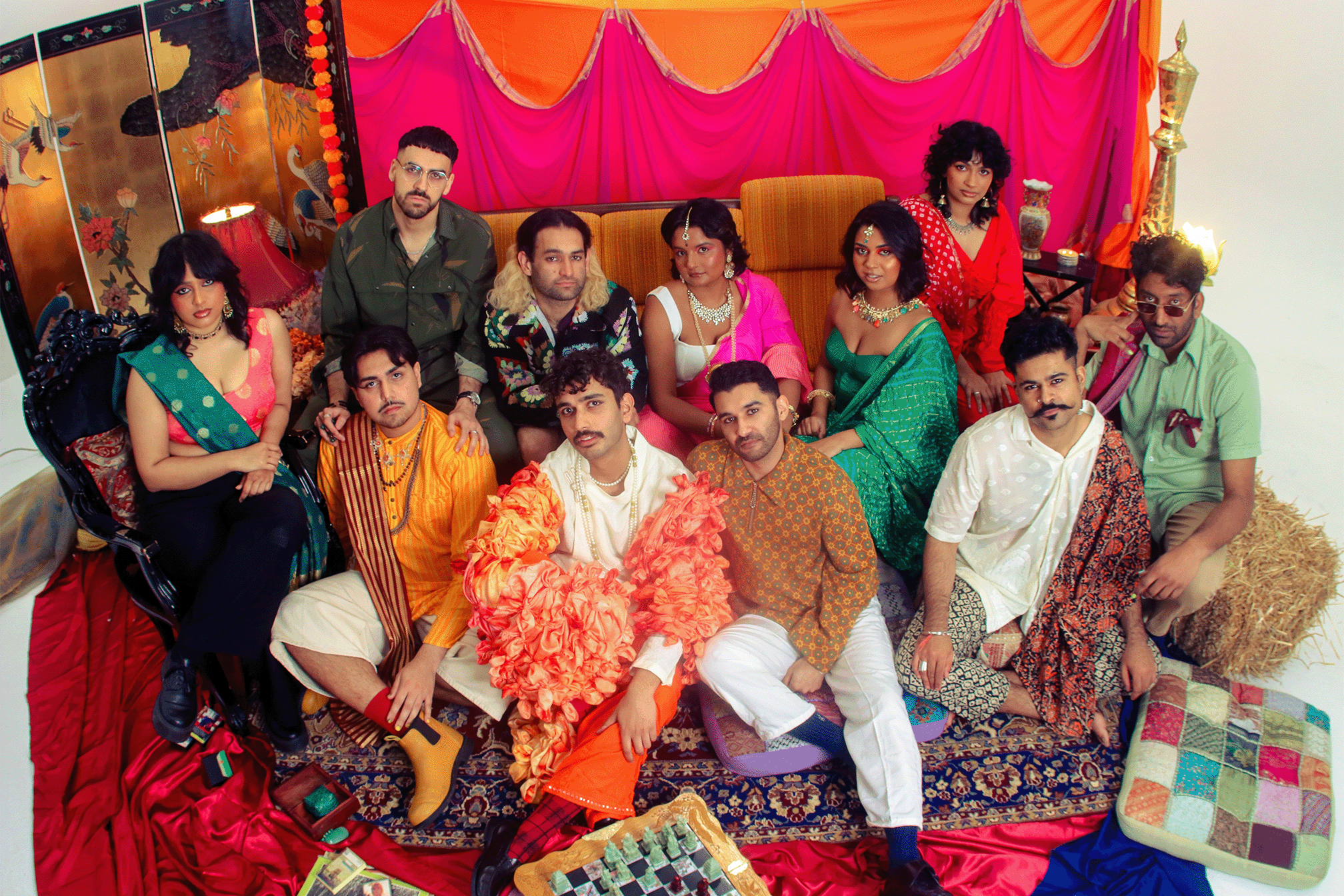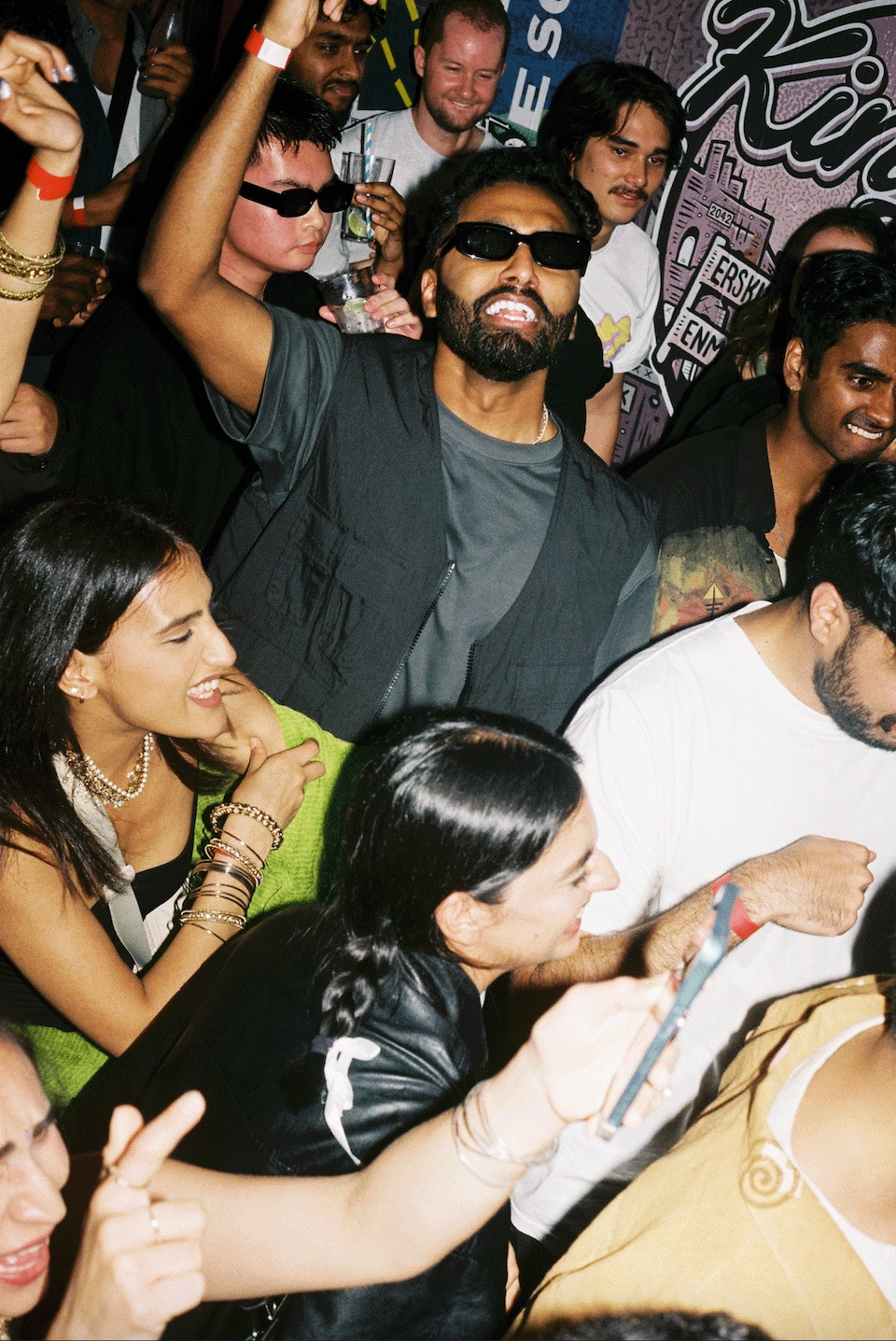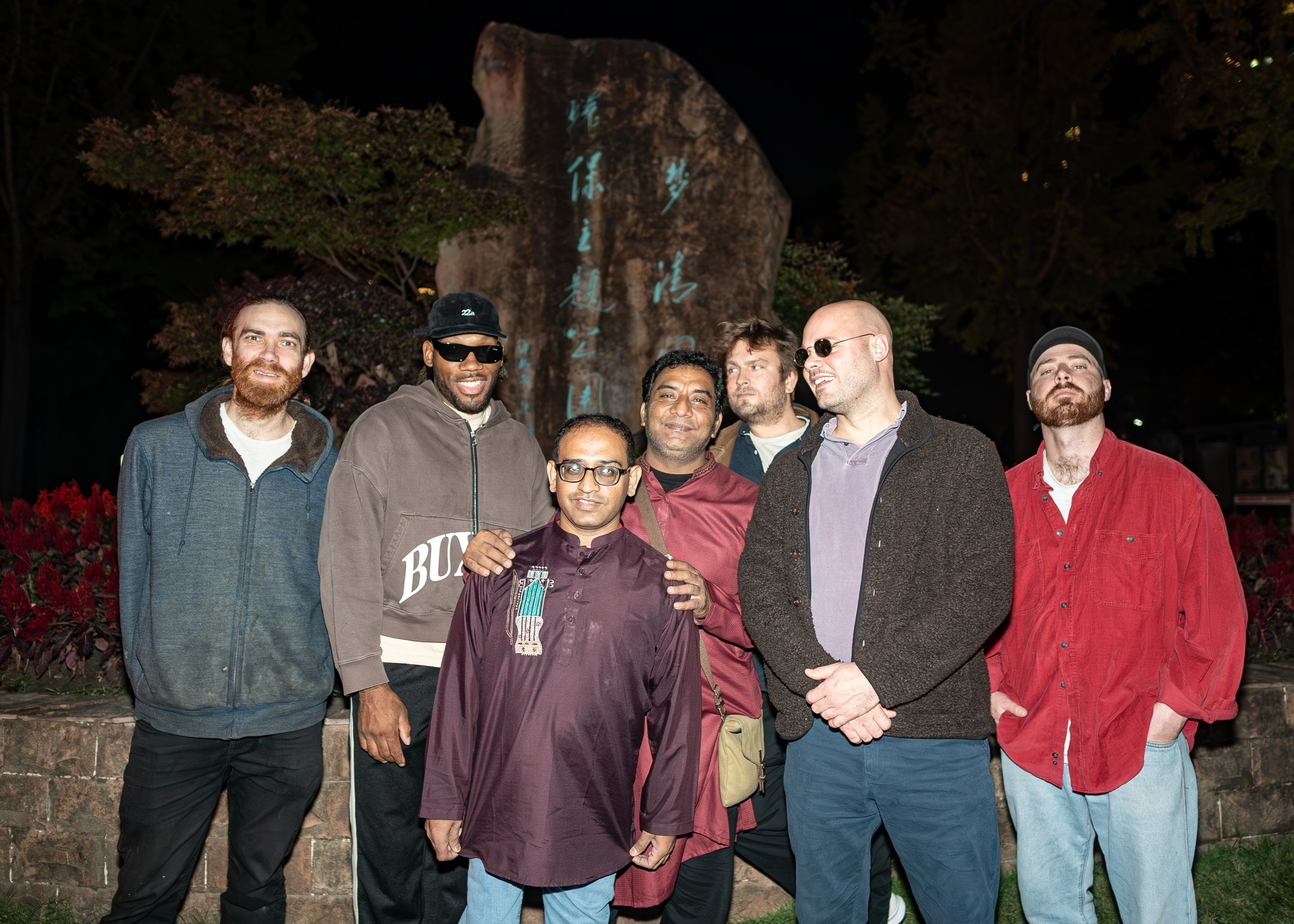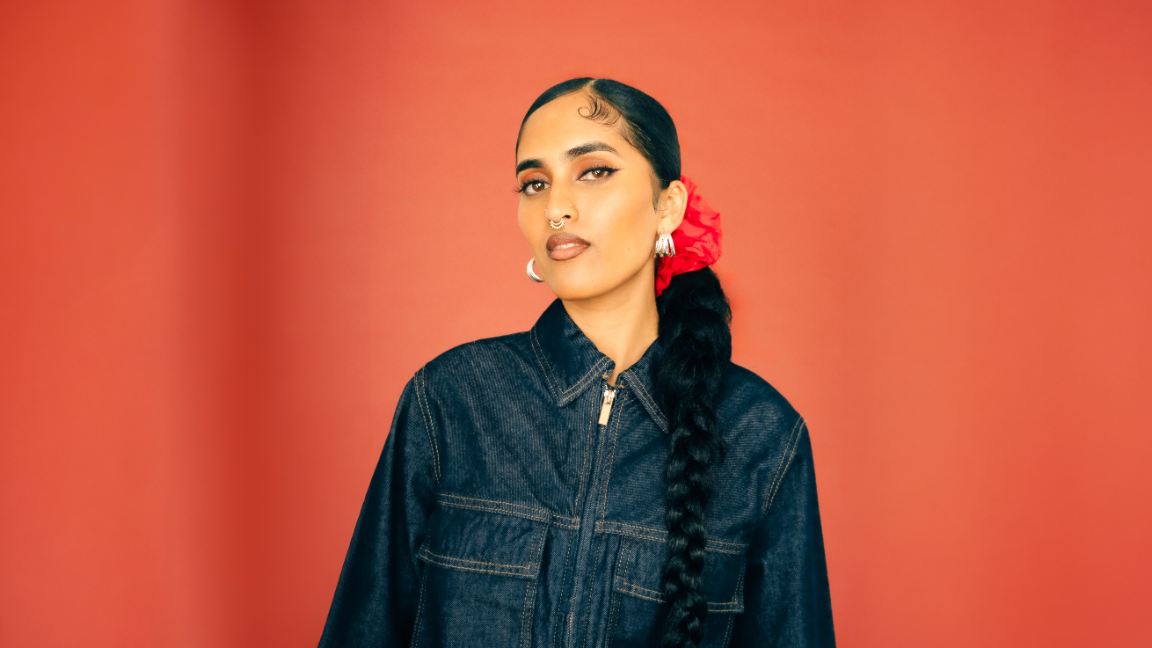 INTERVIEWS
INTERVIEWS
Art breaks Kerfew at AGNSW's Archie Party
The yearly event, designed as a celebration of music, food & art in tandem with the gallery's Archibald exhibition, has this year tapped South Asian collective Kerfew to host.
Across the country, the last year has been a tumultuous time for artistic practices & industries of all kinds.
The announcement this week that Khaled Sabsabi, a Lebanese-born Australian artist and curator, has been reinstated to their representative role at the Venice Biennale, almost six months after the Creative Australia board removed them, is a sign of the times we live in.
While some of the country’s more conservative artistic spaces may shut their doors to critique at this time, in the midst of it all, The Art Gallery Of NSW has proven a somewhat unlikely home for artists not only hanging their work on its walls.
Started in 2022, the ‘Archie Parties’ are yearly events celebrating the gallery’s revered Archibald Prize, where the focus moves from portraits onto contemporary art, music and food from some of the best artists, musicians and food stalls that Gadigal Land/Sydney has.
Now in its fourth year, this year’s Archie Party sees the gallery’s keys being handed to multi-disciplinary collective Kerfew. The Australia-wide group is a collective of South Asian musicians, artists, and professionals from various fields, who share and celebrate the cultures and stories shaped by the uniquely Australian South Asian diaspora experience.
Kerfew’s Archie Party sees a headline performance by Jaubi, an instrumental group from Lahore, Pakistan, as well as LA-based singer-songwriter and producer Gayathri Krishnan. Kerfew’s own MOWGLI, Jhassic, and Munasib are on support, with artist talks by Archibald finalists Bronte Leighton-Dore, Sassy Park and Mostafa Azimitabar.
In a building which has stood as a symbol of what ‘art’ is or should be since 1880, Kerfew’s presence and curation of the AGNSW is a critical comment on the importance of diversity in the art we consume.
Ahead of the event, Mixmag ANZ spoke with representatives from both Kerfew & the AGNSW, Munasib and Clare Willcox, public programs manager for the Art Gallery of New South Wales, respectively.

PHOTO: SOYBASEDSNACK
Q: Why is the AGNSW the ideal setting for a gig like this?
MUNASIB: I think the gallery is just perfect for this show because of its natural inbuilt acoustics already. It's got that very wide, open-sounding hallway type energy. A lot of the music that will be happening will be very reverb heavy. We've got Gaya with her beautiful vocals. Then we've got the sarangi with Jaubi coming through. To be surrounded by all this old colonial art, but then Kerfew taking over the place with new age South Asian sounds is something that is so special. We're so happy to be able to do this and work with the Art Gallery on this.
They've been so wonderful to work with on this and been very facilitating about everything. So I think it just makes sense. Also visually, when you see the music and you hear the music and then you see the art around you, I think it'll really help bridge the gap between worlds. I think it'll just remind everyone that this is what it's all actually about.
-
CLAIRE WILCOX: Archie Party is about bringing different voices and experiences together, a combination of art, music and food. The Archibald exhibition itself is a snapshot of contemporary Australia and captures the spirit of our time. Kerfew epitomises that spirit; they intersect many worlds and are generous and energetic in wanting to share that with a wider audience.
Q: What do you think the availability of public spaces for more ‘modern’ music means for young collectives & artists?
MUNASIB: I think it's super important. I'm not gonna lie, I've actually found it pretty difficult with Kerfew to find a lot of these spaces in Sydney. But I have also been fortunate to work with the Opera House and things like that, and now the Art Gallery. Yeah, they have probably been more facilitating than a lot of other venues have been. So it's been incredible, and I hope we can keep doing things like this and it's not just like a tokenistic, “We've just done it now. Kerfew’s done, quota done for the year,” type of thing. I hope it's something that we can keep programming 'cause there's a lot of other artists that I'd love to be able to put on, and I know that Kerfew wants to work with as well.
-
CLAIRE WILCOX: At the Art Gallery we believe the availability of public cultural spaces for more ‘modern’ music is crucial for empowering young collectives and artists. Particularly at the Art Gallery, spaces serve not only as performance venues but provide the opportunity to take music, dance and performance into different realms of possibility, both creatively and collaboratively.

PICTURED: JAUBI
Q: Housing the debut performances of Jaubi and Gayathri Krishnan is an exciting moment for both Kerfew & AGNSW. Do you think this is any different to the AGNSW showing international art on its walls for the first time?
MUNASIB: I think they're quite similar, in essence, but I think musically, you know, I think it's kind of unexpected, especially for people who know these artists. I don't think they would expect that this would be their debut show. However, it has also come together with the Archie Party, which is a display of art for the first time. I think it's working together in a beautiful synergy, and I think everything that is supposed to happen always happens. So I can't wait to see it all come together, 'cause there are a lot of synchronicities between, you know, the Archie Party, the art and the music that we're programming.
-
CLAIRE WILCOX: Housing the debut performances of Jaubi and Gayathri Krishnan is a significant moment for both Kerfew and the Art Gallery of New South Wales. In many ways, it mirrors the excitement and impact of displaying international visual art on our walls for the first time. We are bringing international artists to a local audience, expanding our community's cultural horizons.
Q: Would you agree that art is inherently political, whether on a canvas or on a stage?
MUNASIB: I would say yes because you know, we are making a statement where we’re saying things for the first time ever in new audiences, new spaces, new stages, especially with something like the Art Gallery. It has a very large, regular audience, and people buy yearly passes just to attend the show. So, you know, they're coming here with no understanding of what the show is gonna be about. They're kind of just coming 'cause it's the Archie Party, right?
But when they do come here, they’re gonna learn about another culture entirely. They're gonna learn about how the diaspora are living in different parts of the world. They're gonna learn our stories or, you know, or learn to understand us better. So I think that's always political, especially coming from Kerfew or myself as a South Asian. I think everything I do, even if I don't want it to be political, ends up having some sort of message, especially in a country like Australia. I'm grateful to be able to help bridge the gap and help expose our stories to more people.

PICTURED: GAYATHRI KRISNAN
Q: What do you think Kerfew being in a building constructed by a colonial country symbolises?
MUNASIB: I think it's really interesting that we're coming in here and are able to kind of carve out our own space in this place that was generally not meant for us. I think it's gonna be a beautiful, interesting juxtaposition 'cause we're gonna have the beautiful sounds of Gayathri and Jaubi in the front, and we're gonna have a whole of colonial artwork in the back, which standalone is, you know, technically beautiful art. So I think it might even be jarring for some people, but I think that's the politics in it, I guess. I think it'll just be really interesting to see, since it'll be first of its kind. I think art is meant to be uncomfortable and I think this will bring up some discomfort, but I also think that it’s beautiful, what we are being able to create, and in this, trying to help bridge the gap further.
Q: What is your biggest hope for this event & ones like it?
MUNASIB: I hope people go away realising and understanding how intricate and detailed South Asian music especially is. We have a few surprises up our sleeve that are specially designed for this event, commemorating it, which you won't find anywhere else. I really want people to come and see it; it’s something I've been dreaming of for so long, so I'm thrilled to be able to do it in the programming for this show. I want people to come and be like, “Wow, this was a really well thought out show. I want to see more.” Just keep coming and showing us that you want to keep coming to these types of events.
Yeah, I just want people to come in and feel at home and feel welcome in a space like this. Because, you know, my parents are coming, but I remember when I was younger I would go out and experience the MCA or different galleries and I'd always think like, “Wow, my parents. Even though they live here, they just wouldn't ever come here because that's just culturally not what most people do.”
Maybe some do, but most people don’t. But tomorrow, you know, they're gonna come and they're gonna see that we've carved out a space for ourselves here with music that is familiar to them. I just want them to come and see this, and I want everyone else to be able to feel that way as well. Maybe people who don't often venture out to the to the gallery want them to do the same thing.



